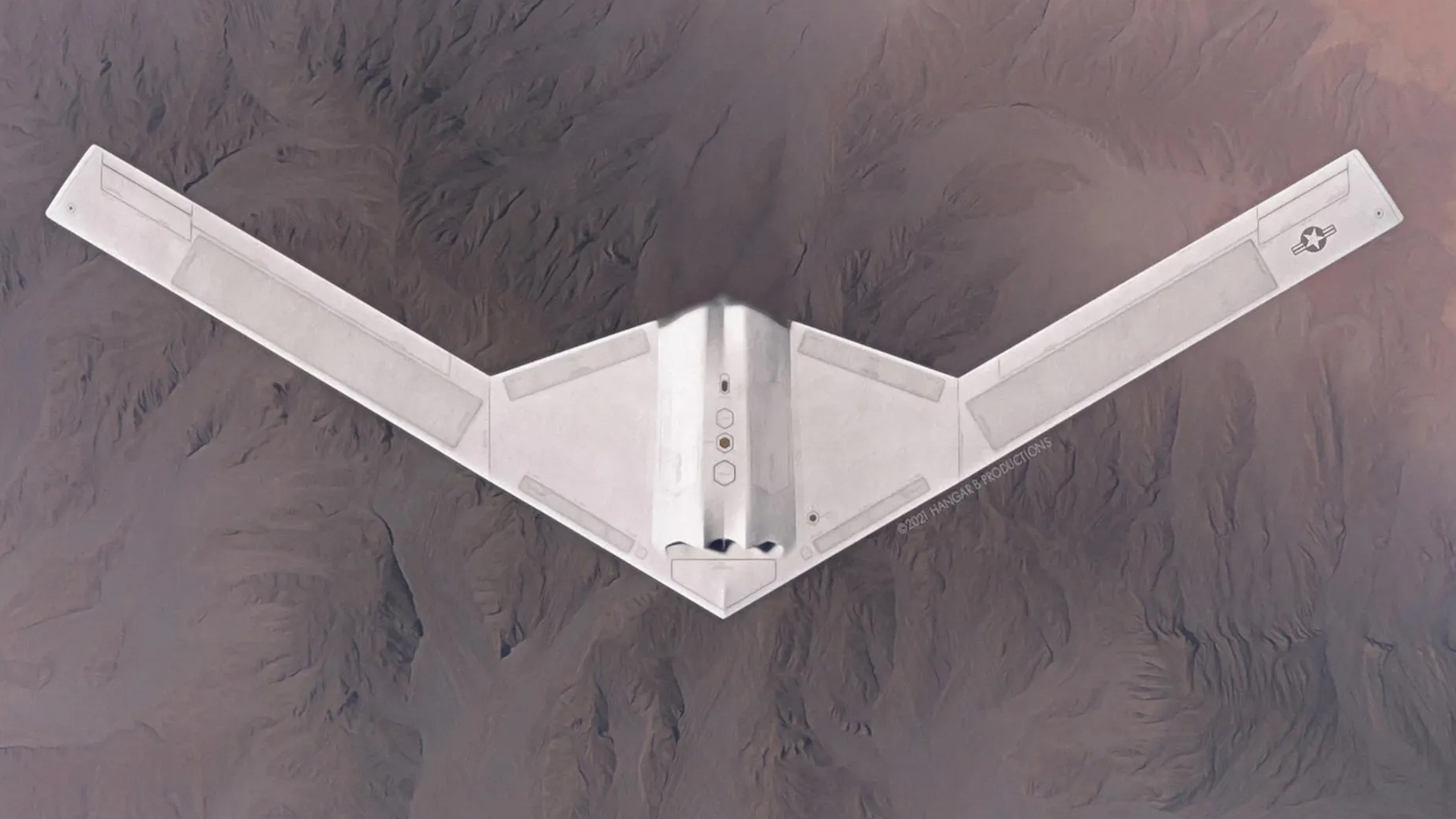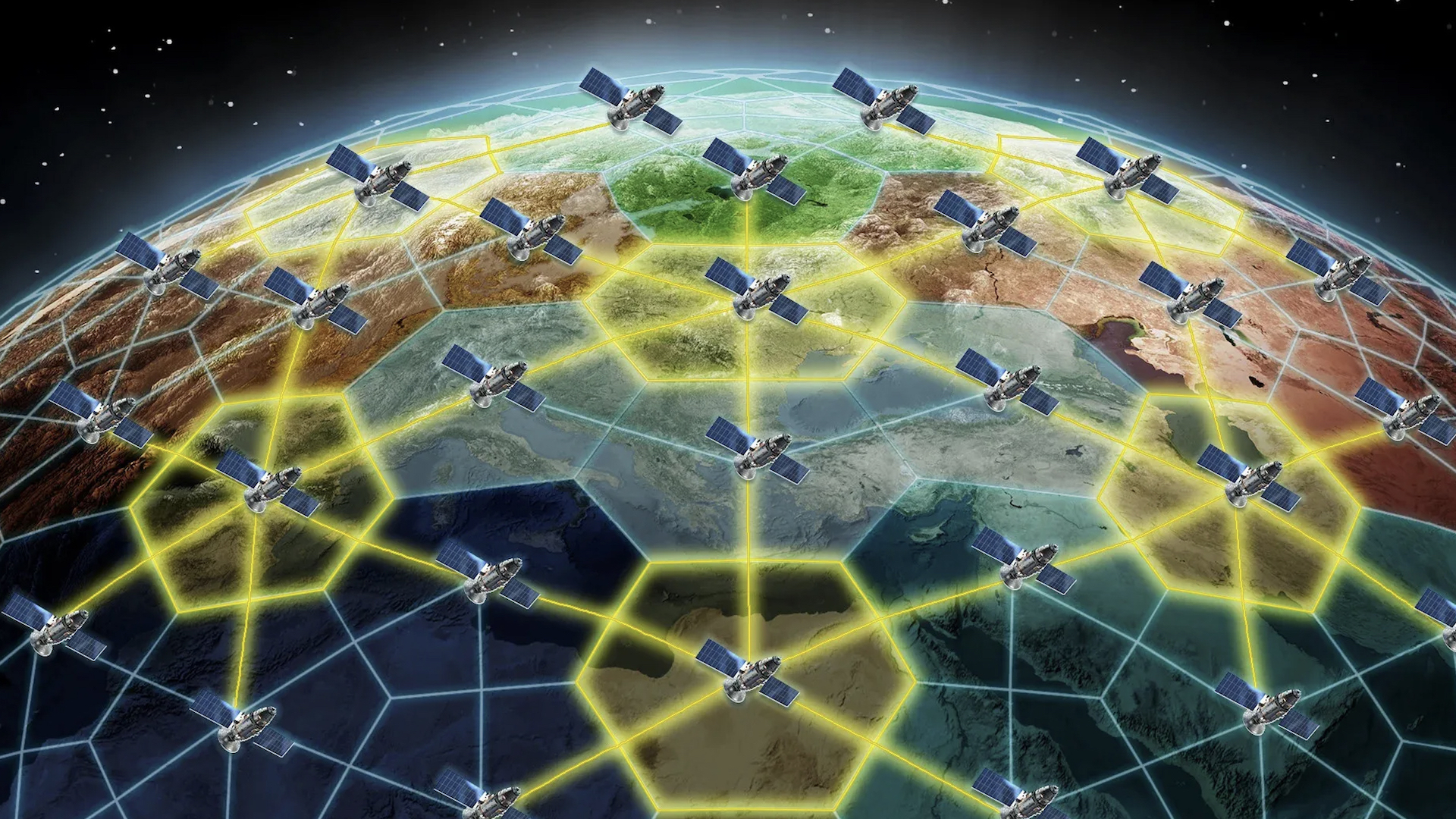The U.S. Space Force second-in-command has provided updates on plans for the service’s introduction of space-based ground moving-target indicator and air moving-target indicator (GMTI/AMTI) capabilities. Also discussed was the U.S. military’s need for a layered surveillance network, including to deal with the expanding breadth of enemy ‘kill webs,’ something which TWZ has discussed in the depth in the past.
Speaking today at the annual Defense News Conference in Arlington, Virginia, Gen. Michael A. Guetlein, the Vice Chief of Space Operations, U.S. Space Force (USSF), said that the first parts of a satellite-based GMTI/AMTI capability should start coming online in “probably the early 2030s.”

Importantly, however, Gen. Guetlein said that he expects the U.S. military’s future surveillance network to involve multiple assets, both in the atmosphere and in space. “I see it always being a layered set of capabilities to increase survivability, first and foremost,” he said.
While a layered surveillance network — one including space-based assets, alongside crewed aircraft, drones, and potentially other platforms — has been discussed for some time now, it was only last month that the design baseline for Space Force’s new satellite system was certified, meaning that it can now progress into the formal development phase.
In the past there have also been repeated suggestions that space-based surveillance assets would increasingly take over from the aircraft that have traditionally undertaken surveillance of targets on the ground, at sea, and in the air. In particular, satellite-based surveillance assets offer the advantages of greater persistence and — at least in the past — enhanced survivability. It is also worth noting that the U.S. National Reconnaissance Office (NRO) is reportedly acquiring a constellation of hundreds of intelligence-gathering satellites from SpaceX, with a specific focus on tracking targets down below in support of ground operations. Its relationship to the USSF program is unclear, but there is certainly some crossover regarding capabilities.
Gen. Guetlein, however, today pointed to what he considers the continuing relevance of non-space-based platforms for the GMTI/AMTI mission, especially.

“The closer I can come to the target, the more resolution I get on the target,” he said. “As I move to space, it becomes harder and harder to get that same level of resolution on a target that may be required.”
Another major theme of Gen. Guetlein’s briefing today was kill webs and the growing threat that they present, reinforcing the need for adequate surveillance, including in space.
“Today, the adversary has migrated to kill webs that fully integrate multiple sensors, multiple bullets, against multiple simultaneous targets, all fully networked together with multiple sensors and all talking together through multiple communication paths,” Gen. Guetlein explained. “The mesh network, if you will, of shooters, bullets, sensors, and communicators, is extremely difficult to defeat. Unfortunately, the adversary is capable of using these kill webs to hold our joint forces at risk across great distances, across multiple domains, and with persistence. This is a very sophisticated and challenging threat.”

Gen. Guetlein also outlined the three broad areas of investment that the USSF is involved in to overcome the threat posed by complex kill webs of this kind.
Specifically, these are: “enhanced awareness to eliminate operational surprise; increased SATCOM to enable our own kill webs and support the joint warfighter; and protecting and defending our space capabilities in order to eliminate the first-mover advantage, and if necessary, to defeat their kill webs.”
While GMTI is a relatively long-established mission for space-based sensors, AMTI is newer and Gen. Guetlein has previously talked about some of the challenges it presents, including integrating various sensors with new and existing command and control networks.
“That requires us to now start thinking about artificial intelligence, it starts you thinking about machine learning, it starts you thinking about new communication pathways,” Gen. Guetlein told Defense News in a previous interview. “I now have to have processing on orbit on the sensor rather than processing on the ground. That’s a new set of technologies.”

In the past, the AMTI mission was handled primarily by the E-3 Sentry Airborne Warning and Control System, or AWACS, a platform that is going to be partly replaced by the E-7 Wedgetail. However, the E-7 has routinely been referred to by officials as something of an interim platform, bridging the capability gap between the retirement of the E-3 and the fielding of a future space-based radar capability of the kind that Gen. Guetlein is now discussing.

Of course, another challenge to achieving these goals is a fiscal one, with the shared budget across the Space Force and Air Force increasingly stretched.
While the USSF’s budget has been steadily increasing, officials have warned that it’s not sufficiently well funded to meet its lofty ambitions, especially in terms of space-based surveillance.
Speaking today, Gen. Guetlein admitted that the management of demand versus resources means that, as of now, the USSF is “definitely sacrificing” some capabilities “because there are definitely not enough resources to go around. We are focused, first and foremost, on readiness.
Gen. Guetlein continued: “We know we can’t buy everything we need, so we are ruthlessly prioritizing all the kit that we’re buying to make sure that it’s the biggest bang for the buck, if you will, during times of crisis or conflict.”
Returning to plans for increasingly bringing moving-target indicator capabilities into space, this is a theme that TWZ has previously explored.
Back in 2021, now-retired Gen. Jay Raymond, then head of USSF, disclosed that his service was “building GMTI from space” and was “actively working to be able to provide that capability” as part of a classified program. In fact, this same space-based GMTI capability dates back longer than that, at least to a 2018 project run by the Air Force Rapid Capabilities Office (RCO).

Fundamentally, GMTI refers to a radar mode that allows them to discriminate between moving targets on the ground and static ones, allowing it to track the activity of the moving targets over time. Typically, a GMTI radar can also gather synthetic aperture radar (SAR) imagery, conferring the ability to produce highly detailed image-like ground maps, day and night, and is able to penetrate cloud cover, smoke, and dust.
The plan to field a space-based GMTI and now also AMTI capability has been seen in the past as justification for the retirement of more traditional capabilities like the U.S. Air Force’s E-8C Joint Surveillance Target Attack Radar System (JSTARS), key assets of which included its GMTI and SAR functions.

(U.S. Air Force photo/Senior Airman Miles Wilson/Released)
Another crewed aircraft with SAR/GMTI intelligence functions, namely the U-2S Dragon Lady spy plane, is also headed for retirement, although its place is widely expected to be taken by a penetrating high-altitude, long-endurance unmanned platform, tentatively known as the RQ-180.
The RQ-180’s expected missions portfolio includes SAR and GMTI, but unlike previous assets, it will be able to conduct this in more contested airspace.
While Gen. Guetlein didn’t refer specifically to any non-space-based platforms that will also provide future GMTI/AMTI capabilities, his insistence on these missions being fulfilled by “a layered set of capabilities” and one that aims to “increase survivability” may well point toward the existence of the RQ-180 and potentially other classified programs in the intelligence, surveillance, and reconnaissance realm.

The specific kinds of GMTI/AMTI capabilities that the Space Force fields, and whether these will begin to be fielded by the early 2030s, as Gen. Guetlein predicts, remain murky for now. However, such is the importance of this kind of surveillance that the Space Force may well already be operating assets capable of at least some of these functions.
Overall, though, if the end results match the ambitions, it should be a critical and potentially game-changing capability going forward, and one that is much more resilient than satellite constellations of the past. It promises to be especially relevant in the kind of high-end fights that will pitch the U.S. military against advanced enemy kill webs — something that would characterize a conflict with China over the broad areas of the Pacific, for example.
What is clear, is that ground moving-target indicator and air moving-target indicator capabilities will be at a premium, with current plans calling for these to be fielded as part of a layered network that involves assets in space and within the atmosphere.
Contact the author: thomas@thewarzone.com
